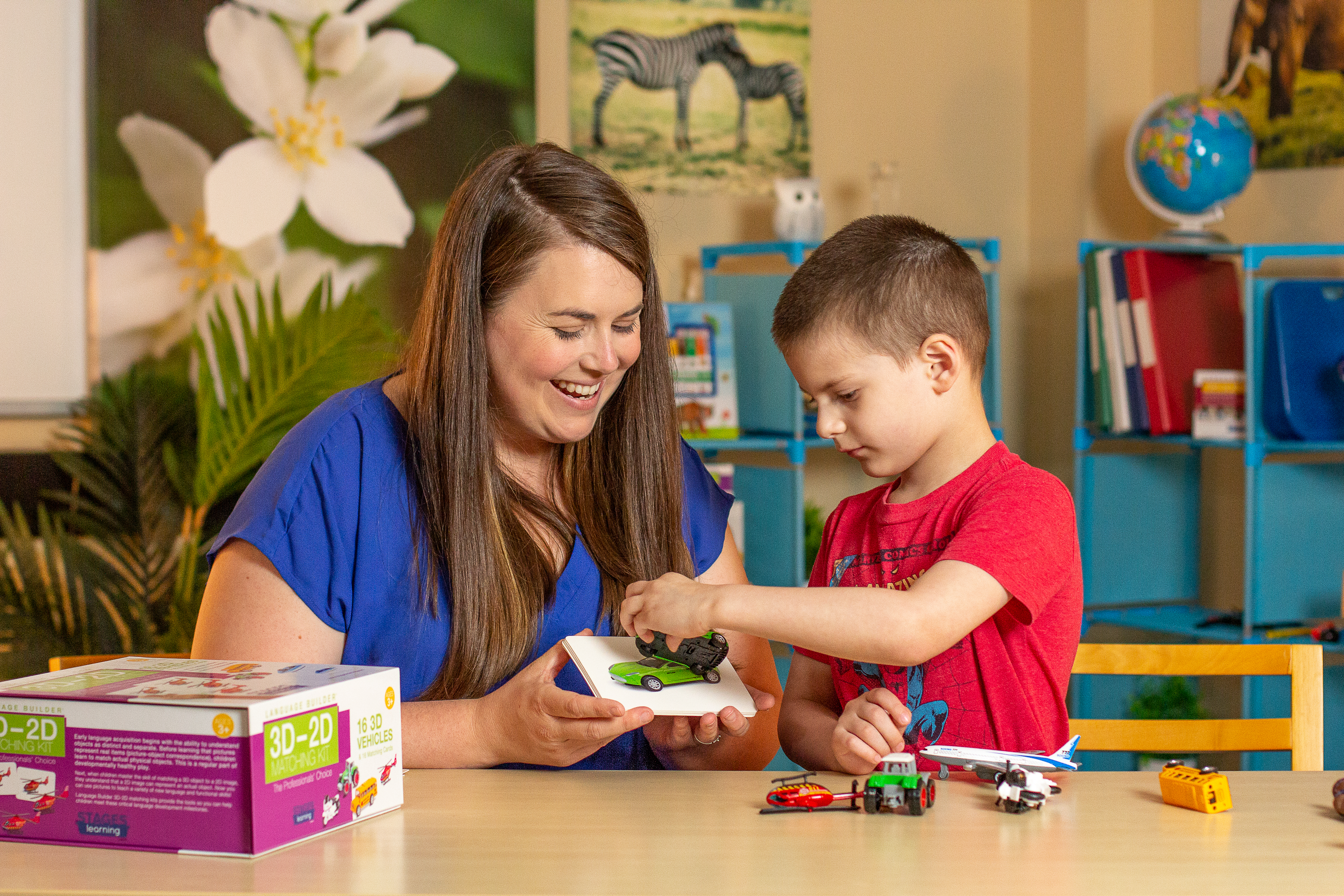What Is MTSS and How Does It Help Struggling Students?
MTSS stands for a multi-tiered system of supports. It is a data-driven, tiered framework, also referred to as a multi-tiered process or model of supports, that is designed to help schools identify struggling students early and intervene quickly. Besides focusing on giving students targeted support in academics, MTSS also concentrates on other areas, such as behavior and social-emotional needs.
MTSS was first introduced when the Every Student Succeeds Act (ESSA) was signed into law in December 2015, which called for a “multi-tier system of supports for literacy services.” The ESSA is a complex law that affects all K–12 students in public education in the United States. Its main purpose is to ensure that public schools provide quality education for all children. It gives States a central role in how schools account for all students' success, including historically disadvantaged students, such as those affected by poverty, students of color, children in need of special education services, and those with limited English language skills.
Key Elements of MTSS
MTSS is a proactive and data-driven approach that has the following key elements:
- It provides universal screening for all students early in each school year.
- It increases levels of targeted support for those who are struggling.
- It integrates plans that address students’ academic, behavioral, social, and emotional needs.
- It is a schoolwide approach to student support with teachers, counselors, psychologists, and other specialists working as a team to assess students and plan interventions.
- It includes professional development so staff can provide interventions and monitor progress effectively.
- It promotes family involvement to help parents and caregivers understand interventions and give support at home.
- It monitors students’ progress frequently so interventions can be adjusted as needed.
- It uses evidence-based strategies at every tier of support.

How Is MTSS Implemented?
There is no one correct approach to MTSS, which is why there are differences in the models adopted by various states and districts. Some school districts use a system with four tiers of support, while others use three tiers. States and districts can also decide on including different essential components within their model or use different wording to define or describe these elements, but there are generally more similarities than differences among MTSS frameworks.
Following is a basic outline of what a three-tiered system may look like:
Tier 1—Universal Instruction:
All students in the general education classroom are in this tier. Teachers use high-quality classroom instruction that has proven to work. This tier incorporates best practices and differentiated instruction and is constantly refined by what works in Tier 2 and Tier 3. Districts typically aim to see 80-90% of students in MTSS Tier 1.
Tier 2—Targeted Group Interventions:
Students who are identified as struggling will still attend Tier 1 lessons with the rest of the class, but they will also receive evidence-based targeted support in the areas they struggle with. For the sake of efficiency, Tier 2 interventions are typically implemented in small group settings based on students’ similar needs identified through assessment. A student who is not responding to this targeted support may stay in Tier 2 or move to Tier 3. Districts typically expect to see 5-15% of students in Tier 2.
Tier 3—Intensive Individualized Support:
Tier 3 provides more frequent, intensive, and individualized interventions for students not responding to Tier 2 supports, or who show a more acute need for support. This tier can include small group work or individual lessons. Most students in Tier 3 still spend a portion of the day in the general education classroom, but they may spend more time in a resource room than before. Usually, districts expect to see 1-5% of students in Tier 3.
Students can be in different MTSS tiers for different needs at the same time. For example, a student might be in Tier 2 or Tier 3 to receive intervention for a Social-Emotional Behavior (SEB) need, such as self-management, while at the same time succeeding in Tier 1 for math.
A special education evaluation is usually the next step if students don’t make enough progress in Tier 3. The data taken on these students will later be helpful when developing an IEP for them. Of course, parents or caregivers don’t have to wait for their children to pass through all MTSS steps before requesting an evaluation. If they have concerns that their child may need further interventions or special education, they can ask for an assessment at any time.

Data-Based Decision Making
Assessment data tells us where individual students are at in their learning, what specific skills they are struggling with, and how well they are progressing toward their learning goals. All decisions about placement in and movement within the multi-level support system, such as an increase of instruction or support or the identification of students with disabilities, are based on assessment and progress-monitoring data.
Data analysis and data-based decision-making take place on all levels of MTSS to ensure interventions are implemented as intended and to identify the areas of need and improvement. Typically, students are screened at the beginning of the year and periodically throughout the year via a universal screening assessment. If a student is identified as at risk, their specific needs are found through further diagnostic screening that helps pinpoint the exact area of need for better intervention support.
Today, MTTS and structured interventions are more needed than ever. Data shows that during the COVID-19 lockdown, even in the most favorable conditions, students made little or no progress while learning from home. Learning loss took place across the board but was most pronounced among disadvantaged students.
This means more screening, data collection, and progress monitoring are needed to provide appropriate support for struggling students quickly and effectively. Keeping accurate and consistent data gives a clear picture of how well a student is progressing and ensures that every teacher, therapist, and parent who spends time with a child is encouraging and reinforcing the same targets.

The ARIS® Academic Readiness Intervention System curriculum from STAGES® Learning was designed to serve as a Tier 3 Level tool to help elementary school children with moderate to severe autism, language delays, or cognitive impairments.
The ARIS data collection tools are designed to help teachers use data to help inform decisions about needed support for their students. They were created to help educators keep the accurate, detailed records needed to monitor and improve the effectiveness of their efforts. Each reproducible sheet gives condensed instructions for performing activities, provides space to record the child’s performance, and has an area for notes, so all the student’s progress is recorded in one place and can be easily shared with a student’s teaching team and family. They can be used independently of the ARIS curriculum, but are also closely tied into the strategically designed lessons that can address issues uncovered by data collection.
The data collected through assessments and progress monitoring will enable the teaching team to strategically and incrementally build the student's ability to respond so they will be ready to move forward in the program or move up in the tiered MTSS framework that was specifically designed to help schools identify struggling students early and intervene quickly with the targeted support in academics and other needed developmental areas.
What are your experiences with MTSS, and what challenges have you faced in collecting and analyzing data for appropriate student placement? Have you used ARIS or the ARIS data sheets with your students? Please tell us about it in the comments section.
We hope you enjoyed the information in this article. Stages Learning also offers free downloadable resources to support teaching and learning with individuals with autism. Start with our free Picture Noun Cards and see our collection of other downloadable resources here!
Resources:
https://www.illuminateed.com/lp/20221019-mtss-toolkit-ie/
https://www.illuminateed.com/lp/20221201-how-to-make-data-driven-goals-within-an-mtss/

Ymkje Wideman-van der Laan
Ymkje Wideman-van der Laan is an author, public speaker, and Certified Autism Resource Specialist from the Netherlands. After working abroad as a teacher and humanitarian for 25 years, she moved to the US in 2006 and assumed the care of her then 6-month-old grandson, Logan. There were signs of autism at an early age, and the diagnosis became official in 2009. She has been his advocate and passionate about promoting autism awareness and acceptance ever since. Logan is the inspiration behind the Autism Is...? (tinyurl.com/5aj73ydd) series of children’s books she initially wrote for him and later published. Ymkje currently lives in California with her now 15-year-old grandson, and besides writing, presents autism training workshops for early childhood educators, parents, and caregivers. You can read more about her story in her newly released book, Autism on a Shoestring Budget, [Early] Intervention Made Easier (https://tinyurl.com/ysxhxbmf). For more information, you can visit www.autism-is.com, www.facebook.com/AutismIs, and/or contact her at autismisbooks@gmail.com.




